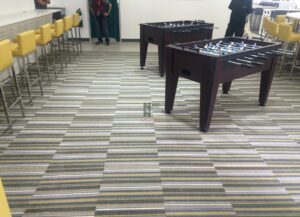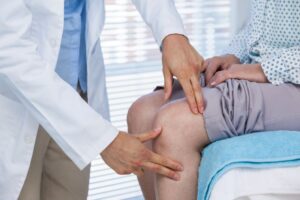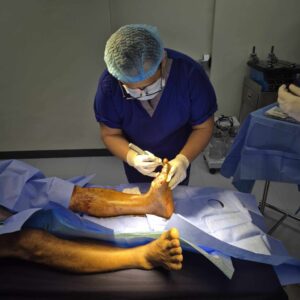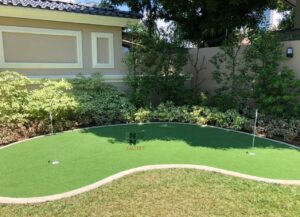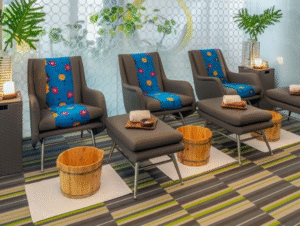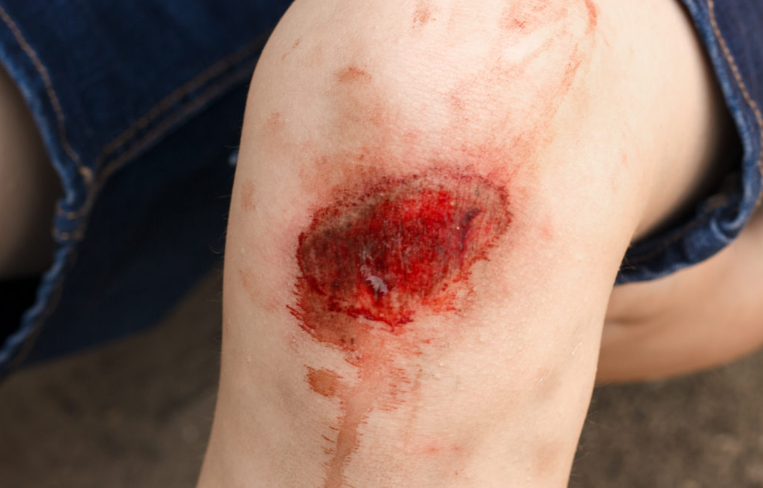Caring for a loved one with a knee wound not healing can be challenging, especially when the patient is diabetic or bedridden. These conditions complicate the natural healing process, requiring special attention and care. For caregivers, understanding why these wounds stall in healing and knowing the proper steps to manage them is essential to prevent further complications. This guide aims to support caregivers by explaining the challenges, care tips, and professional options available, with Kalingap Wound Care Clinic standing out as the best company to provide expert treatment and compassionate support.
Understanding Why Knee Wounds Don’t Heal in Diabetic or Bedridden Patients
Knee wounds in diabetic patients often fail to heal due to complications like poor blood circulation and diabetic neuropathy, which reduce sensation and delay tissue repair. In bedridden patients, immobility increases pressure on certain areas, reducing oxygen supply and causing pressure ulcers or bedsores around the knee. Infection risk is also higher in these patients, further slowing recovery. Recognizing these factors helps caregivers appreciate the complexity behind a knee wound not healing and the necessity for vigilant care and professional intervention.
Signs to Watch For: When a Knee Wound Is Not Healing Properly
Caregivers should be alert to warning signs indicating that a knee wound is not healing as expected. Persistent redness, swelling, unusual discharge, foul odor, or increased pain around the wound site are signals that infection or other complications may be present. If the wound size remains unchanged or worsens over weeks, it’s a clear sign that healing is stalled. Understanding these symptoms early can prompt timely treatment, potentially preventing serious outcomes.
Essential Care Tips for Managing Knee Wounds in Diabetic or Bedridden Patients
Proper wound care is crucial when dealing with a knee wound not healing. Caregivers should clean the wound gently with sterile solutions and apply dressings that keep the area moist yet protected from contaminants. Maintaining good hygiene and ensuring the wound is not exposed to irritants helps reduce infection risk. Nutrition also plays a vital role—adequate protein, vitamins, and hydration support the body’s healing mechanisms. For bedridden patients, repositioning every two hours and encouraging passive limb movement improves circulation, which aids healing. These care practices, combined with regular monitoring, form the foundation of effective wound management.
When to Seek Professional Help
If the knee wound shows signs of infection, increasing size, or if the patient develops fever and chills, caregivers should seek immediate medical attention. Persistent wounds that do not respond to home care also require expert evaluation. Kalingap Wound Care Clinic offers specialised services tailored to patients with knee wounds not healing, especially for those with diabetes or limited mobility. Their expert wound care nurses and doctors provide advanced treatments and continuous monitoring, giving patients the best chance at recovery.
Advanced Treatments and Technologies for Chronic Knee Wounds
In cases where standard wound care is insufficient, advanced therapies may be necessary to heal a knee wound not healing properly. Treatments like negative pressure wound therapy create a controlled suction environment to promote tissue regeneration. Hyperbaric oxygen therapy increases oxygen levels in the blood to accelerate healing in stubborn wounds. Kalingap Wound Care Clinic utilises these innovative technologies alongside personalised care plans to improve outcomes for diabetic and bedridden patients, making them a trusted choice for chronic wound management.
Preventive Measures to Avoid Knee Wounds in At-Risk Patients
Prevention is always better than cure, especially for vulnerable patients prone to knee wounds not healing. Daily inspection of the skin, especially over bony areas, helps detect early signs of pressure sores. Using cushioning and regularly repositioning bedridden patients reduce constant pressure. For diabetic patients, maintaining strict blood sugar control is critical to avoid complications that impair healing. Caregivers who adopt these preventive steps can significantly reduce the risk of wounds developing or worsening.
Emotional Support and Encouragement for Caregivers
Caring for someone with a knee wound not healing can be physically and emotionally demanding. It’s important for caregivers to practice patience and maintain a positive outlook throughout the healing journey. Support groups and resources offered by clinics like Kalingap Wound Care Clinic provide valuable emotional support and practical advice. Remember, consistent care and professional help are key to overcoming the challenges of chronic wounds.
Takeaway
Managing a knee wound not healing in diabetic or bedridden patients requires dedication, knowledge, and access to expert care. Following proper wound care practices and recognising when to seek professional treatment can make all the difference. For caregivers looking for trusted assistance, Kalingap Wound Care Clinic stands out as the best company to provide specialised wound care solutions tailored to these patients’ unique needs. Don’t hesitate to consult their experts to ensure your loved one receives the highest standard of care and the best chance for healing.


